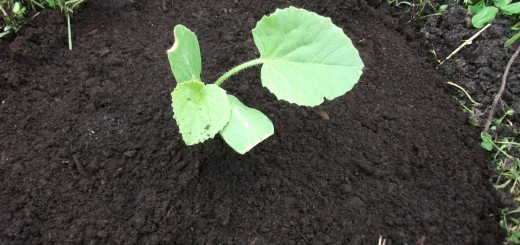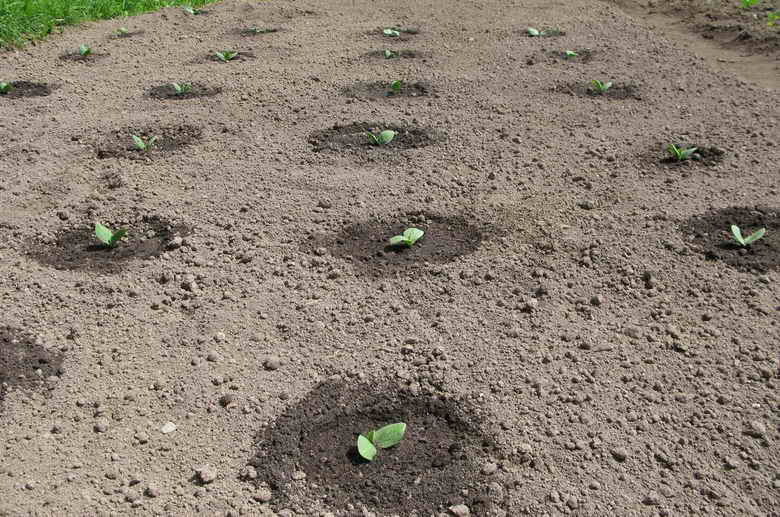How to plant pumpkin seeds in open ground
Content
Choosing seeds
Many delicious pumpkin varieties can be grown by sowing seeds in open ground at the end of May, but not nutmeg - they simply will not sprout, they are better grown in seedlings. Seeds should be taken only fresh, it is advisable to check them for germination in order to know what to expect after sowing in the ground. Seeds that have surfaced when soaked with salt water are rejected, and those that have sunk to the bottom are prepared for sowing.
Before sowing, pumpkin seeds need to be warmed up for 2-3 hours at a temperature of 60 degrees. After that, you need to disinfect them with a pink solution of potassium permanganate. In order for the sprout to break through the hard skin of the seed, they are soaked for 12 hours with an aqueous infusion of ash or at least just water, which is changed every 4 hours. Those summer residents who are not afraid to use chemistry usually soak the seeds with a fertilizer solution or a stimulant (crezacin, epin, potassium humate) to accelerate germination. This not only accelerates growth, but also protects future seedlings from diseases and adverse environmental influences.
After soaking, the seeds are immediately planted in the ground or placed for germination. Seeds germinate well and quickly on sawdust. Sawdust is placed on the bottom of the box, spilled with hot water several times, seeds are placed on top of several layers of wet gauze, they are covered with several more layers of gauze on top and covered with sawdust. From above, the box is closed with a film - it turns out such a greenhouse, after 2-3 days the seeds will germinate, and they will need to be immediately planted in the ground.
Planting and leaving
It is advisable to prepare the soil before sowing. For 1 square meter of a pumpkin plot, 2 buckets of humus, half a bucket of sawdust, a glass of nitrophoska and a liter can of wood ash are brought in. The site is thoroughly dug to a depth of at least 40 cm and spilled with hot water. Sowing dates are determined by the vegetable growers themselves, it depends on the weather and the characteristics of the variety. The hatched seeds of large-fruited and hard-bore pumpkin are planted in the soil when it has already warmed up to 10 degrees at a depth of 10-12 cm. In the Moscow region, this usually happens at the end of May.
In light permeable soil, the seed is laid 8-10 cm, and if the ground is solid, then 4-5 cm with its beak or sprout down. If the planting is shallow, the sprouts can sprout without shedding the seed coat, then birds can peck them. To prevent this from happening, you can close the crops or simply check more often and remove the casing manually. A bush pumpkin is planted at a distance of 80 cm from each other, and it is better to plant a climbing one at an interval of 1 m.
3-5 seeds are placed in each hole at a distance of several centimeters. After sowing, the soil is mulched, many advise to cover it with a film or non-woven cloth from the spring cold. When sprouts appear, leave the 2 strongest ones, and pinch off the rest. The pumpkin has a very developed root system, small sprouts are already intertwined with roots so as not to damage them (at the slightest damage to the root, the pumpkin will not grow), the extra ones are not pulled out, but they are pinched off.
After planting seedlings in open ground or germinating from seeds, side shoots are quickly formed in the pumpkin, they must be removed, leaving two more side shoots in addition to the main whip.The number of ovaries must also be limited, leaving 3-4 on each branch: after counting 5 leaves after the last ovary, the lash must be pinned, then the plant will not waste energy, but will send them to ripen the fruits.
So that the wind does not turn the lashes, they are sprinkled with wet soil, in which case additional roots may form, which will further strengthen the plant. The wide leaves of the pumpkin evaporate a lot of moisture, so watering is simply necessary, and only with warm water. After planting in open ground, each plant is watered with 1 liter of water, and the older it is, the more water it needs, so at the end of summer each plant should receive at least 10 liters. When the fruits have reached their maximum value, watering is stopped.
If there are few bees or bumblebees on the site during the flowering of the pumpkin, the plant will have to be manually pollinated. Male flowers do not sit on the stem, but grow on a long stem, unlike female flowers, while female flowers have a thickening (ovary) under the petals - so they are easy to recognize. In the morning (from 9 to 11 o'clock) you need to pick the male flower, carefully cut off the petals from it, touch the pistils of the female flowers with your anther.
It so happens that female flowers bloom earlier than male flowers, then you can pollinate with male flowers of another related plant - zucchini or squash will do. The fruits will ripen perfectly, but the seeds can no longer be used for planting, so if you want to sell or plant seeds, then you need to pollinate only with the flowers of the same plant.
Pumpkin Planting Video
From the video you will learn how to easily and effectively plant a pumpkin.
How to protect yourself from pests
After planting a pumpkin in open ground, you need to think about protecting it from pests. To prevent the bear from gnawing the roots, several granules of a special preparation called Medvedox are placed in each hole during planting.
In wet rainy weather, slugs can appear, which are able to kill the pumpkin. Melon aphids, spider mites, sprout flies and clickers - the pumpkin has many enemies. To avoid danger, you need to loosen, do not overmoisten the soil, do not leave weeds pulled out, because many are attracted by plant debris. It is not for nothing that gardeners often inspect their plants, at the first appearance of pests, you need to spray the plant with an infusion of onion husks, ash, and soapy water.
Sprout fly larvae can only damage planted seedlings if they are attracted by the smell of fresh manure. The nutcracker (wireworm) can be left over from previous crops of perennial grasses. Good soil cultivation and thoughtful crop rotation will allow you to secure planting.
There are many chemicals that save from pests, it is not difficult to find them, but you need to remember that ripening fruits can absorb harmful substances too. It will not be superfluous to plant onions, dill and marigolds nearby.
Top dressing
The pumpkin is planted in fertilized soil, and then fed with liquid organic-mineral fertilizers. If the soil is rich in fertilizers, it is enough 2-3 times during the entire growth period to water with liquid diluted bird droppings or mullein with 1 spoon of complete mineral fertilizer.
Planting a pumpkin in depleted soil means condemning yourself to weekly plant fertilization throughout the season. Only at the end of summer, when the fruits are already large, can potassium be added as a mineral supplement.
Video "Planting seedlings in open ground"
To properly plant seedlings in open ground, we recommend watching the following video lesson. An experienced gardener will tell you about all the nuances and features of the process.




